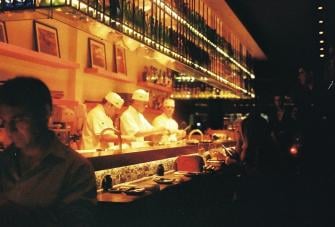How to Effectively Manage Promotions
Are your promos actually making you money? Here are some ways to make sure your promotions boost your bottom line.
Whether you own a retail store or a restaurant, promotions are undoubtedly a part of your business strategy. But are you running promotions the right way? Or are you the sad product of a statistic claiming 50% of promotions actually lose money?
Here we'll teach you a few strategies to ensure that your sales and deals are actually successful and profitable for your business.
Promote with promotions
The first step to managing promotions the right way is to have them in the first place. You can advertise your goods and services all you want, but only when you tie those advertisements to a promotion do they really create interest and traffic at your establishment.
Many studies show that a large number of consumers only convert - or buy - when they feel like they are getting a deal of some kind. And many times a promotion or deal is the first step into welcoming prospective customers into your typical, trusty sales funnel.
Building a sales funnel
The first two stages of this funnel, “interest” and “awareness”are much more likely to capture prospects if you advertise promotions, sales and deals in order to encourage more people to come to your brick and mortar store or restaurant. If you're walking down the street, you're much more likely to step into a store that has big red signs that say, "SALE 50% OFF", or something of the like.
In fact, many times a promotion is essential to fast-tracking the first 4-5 steps of the sales funnel in one fell swoop. Once you have captured awareness and interest through your bright red SALE sign, consideration, intent and evaluation often happen right when the consumer sees exactly how good the deal is (or appears to be) - that’s where the 50% off part comes in.
That’s just a hypothetical example, but you can see how that works with promotions across all verticals—including retail, restaurant and hospitality whether promotions are visible online (via email or social advertising), in-store, or in marketing materials like flyers and direct mailers.
But how do you decide what to promote for your promotion? And how do you know if your promotion will result in revenue or a return on investment of some kind?
Here are four ways to know just that. And when conducted in order, you may just arrive at the perfect promotion process for your business.
1. Understand customer buying behaviour
There’s a lot of power in knowing why people buy, and the internet is a vast landscape of industry-specific, scholarly reports that can tell you just that. Do your research. Know why people buy, and know not just statistics about the general population and your industry, but delve into the demographic and your specific location even more.
Examine the demographic of past customers at your store. With the right point of sale system, this is easy to do by pulling reports. If your POS system lacks these functions, give us a call. In the meantime, there are other ways to gauge your demographic and examine your customers’ buying behavior.
For starters, just look at who's walking through the door. Pull reports on your Facebook audience to see who likes your page. Maybe your Facebook followers are 87% women. That can tell you so much about what kind of products to start investigating promotion options on.
2. Know every element of your pricing structure
Notice the phrase in the section above about "starting to investigate" possible promotions. That's what makes this next step so important. You can have a "fun" or "cute" idea for a promotion. But if you jump into it with both feet without evaluating the promotion with business intelligence tools, your promotion could mean a big loss in revenue. Hint: promotions are supposed to result in the opposite … more money for your bottom line.
As a business owner your job is to increase demand and sell-through of your products, goods and services. A more structured approach to pricing and promotion management is the answer. Here are a few tools that can help you:
- point of sale reports
- competitive analysis
- stock takes
- dead stock reports
- examining past promotions vs. gross margin
3. Promote your promotions effectively
Now that you’ve investigated the kind of promotions that will make your store or restaurant money and will attract the right people, it’s time to get the word out. Make sure you start creating buzz around your promotion well before the date it becomes active. Advertise on social media, send emails to your customer list, get the word out to your most loyal customers, and try reaching a new audience, either through paid ads on social media or tried and true flyers around town.
Another way to create a buying culture around your promotional items is to give your products a story. If you’re running a promotion on insulated water bottles, why not tie the promotion to exciting life events, an adventurous camping trip or a workout story about hydration. If you’re running a special on two entrees for $35, why not tie this promotion to a date night narrative.
4. Analyse your promotions after they happen
The last and arguably most important step in running a promotion at your store or restaurant is to run reports and analysis after the promotion has taken place to see how you’ve benefited. Did you run through some dead stock during the promotion and save your margins on those items? Did your promotion create more foot traffic at your store or restaurant on that day, week or month? With the right point of sale tools, you can gauge this and so much more.
We can help you rock your next promotion
Whether you’re an existing customer or Epos Now or you’re considering upgrading to an award-winning and affordable point of sale system, we can help you rock your next promotion. Contact us today to see how our business intelligence tools can do wonders at your retail store or restaurant.



